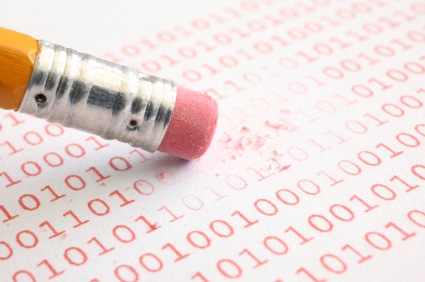
A key skill while growing as a developer is identifying when to take a torch to your code. When I first started as a software developer, a senior pair gave me advice that I still remember when I’m feeling in over my head. He told me it’s okay — good even — to delete your code. That made me nervous. It sounded like the classic “work as an intern for a summer and get all your code tossed out at the end” situation. Over time, however, I’ve learned that deleting code is a discovery tool, and a prescribed burn when our unmanaged codebase is getting a little too close to spontaneous combustion.
Delete to Understand
When y…

A key skill while growing as a developer is identifying when to take a torch to your code. When I first started as a software developer, a senior pair gave me advice that I still remember when I’m feeling in over my head. He told me it’s okay — good even — to delete your code. That made me nervous. It sounded like the classic “work as an intern for a summer and get all your code tossed out at the end” situation. Over time, however, I’ve learned that deleting code is a discovery tool, and a prescribed burn when our unmanaged codebase is getting a little too close to spontaneous combustion.
Delete to Understand
When you inherit a sprawling, undocumented, untested legacy codebase, sometimes the best way to understand it is to start pruning. Strip away chunks, see what breaks, watch how the system reacts. Each deletion reveals the real dependencies and the fragile threads holding everything together. The codebase starts to feel less like a black box and more like something you can reason with. Deletion is a learning tool! It sharpens your mental model of the system in a way that reading alone rarely does.
Delete to Improve
The mindset shift is especially hard for newer devs, and understandably so. It’s very relatable to wrestle with a problem for hours and become attached to the output that finally worked. But writing code is only half the skillset. Deleting it is the other half. Being able to step back, see that two separate concepts should be tightly coupled, or that business rules are better enforced in a single place instead of three scattered files – that’s the kind of thinking that prevents sprawl and confusion. Consolidation is a gift to your future self and to every teammate who will touch the code after you. Code you cling to too tightly today can easily become tomorrow’s technical debt.
Delete Thoughtfully
Start with low-risk targets: dead code, duplicate logic, unused variables, and long-abandoned feature flags. Search for references, check analytics or logs for usage, and inspect test coverage to find code paths that haven’t been exercised in ages. Sometimes, the code that feels the most mysterious is the best candidate for removal; it’s either obsolete or in desperate need of refactoring.
When you’re unsure whether code is still necessary, lean on techniques like Git bisect to help you understand its history. If something breaks after a deletion, bisecting lets you quickly trace when a behavior changed or a bug emerged, narrowing down the critical commits.
Just as important as the technical methods are the habits around deletion. Don’t go big all at once – make small, reversible changes. Use feature flags when applicable. Write or update tests beforehand, practice ping-pong with a pair. And always assume someone, or something, is relying on that one helper function you almost skipped over. The riskiest deletions are those made in isolation, without review or rollback options. Good deletion isn’t guesswork. It’s disciplined, thoughtful, and collaborative.
So yes, good devs delete their code. Not recklessly, not to be clever, but as a deliberate practice. Deletion brings clarity. It turns an overgrown forest of “what ifs” into a healthy prairie of “what matters.” And maybe the most freeing realization of all: your value as a developer isn’t measured by how much code you write, but by how much complexity you can wrangle.
Related Posts
Tips for Frontend Work in an Environment with No Tests
Why I Always Check Out and Test PR Branches Locally
Disposable vs. Durable Code: You Can’t Build Rome with Sticky Notes
Keep up with our latest posts.
We’ll send our latest tips, learnings, and case studies from the Atomic braintrust on a monthly basis.
[mailpoet_form id=“1”]
Tell Us About Your Project
We’d love to talk with you about your next great software project. Fill out this form and we’ll get back to you within two business days.